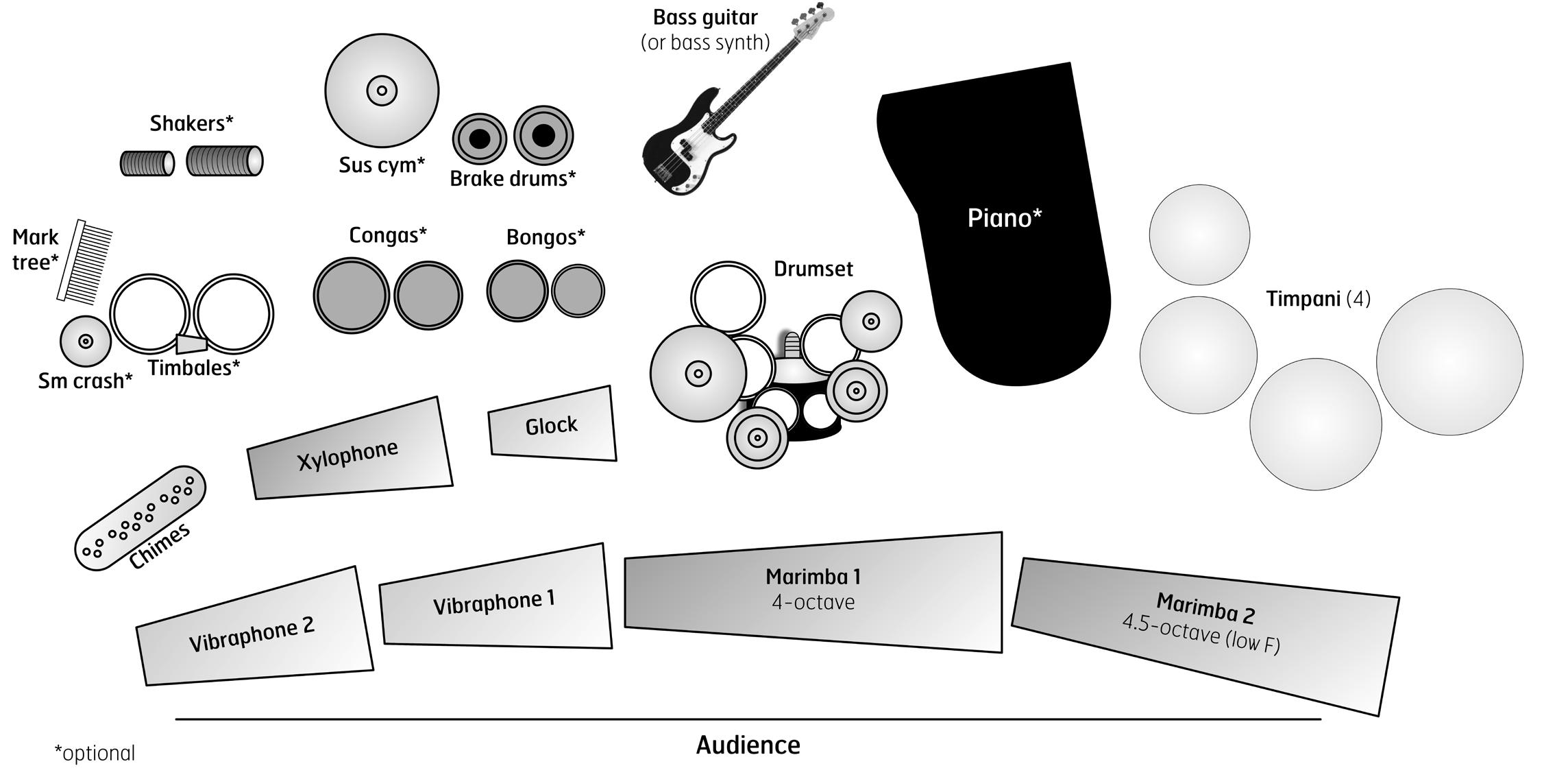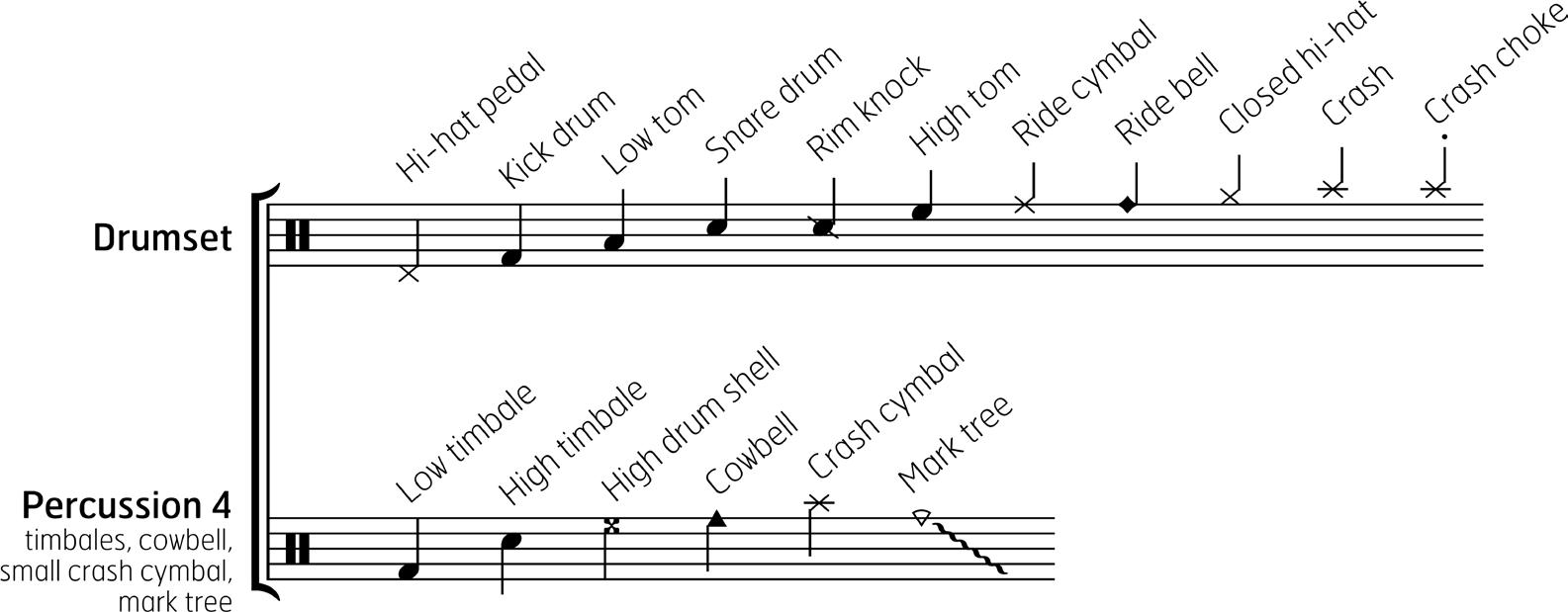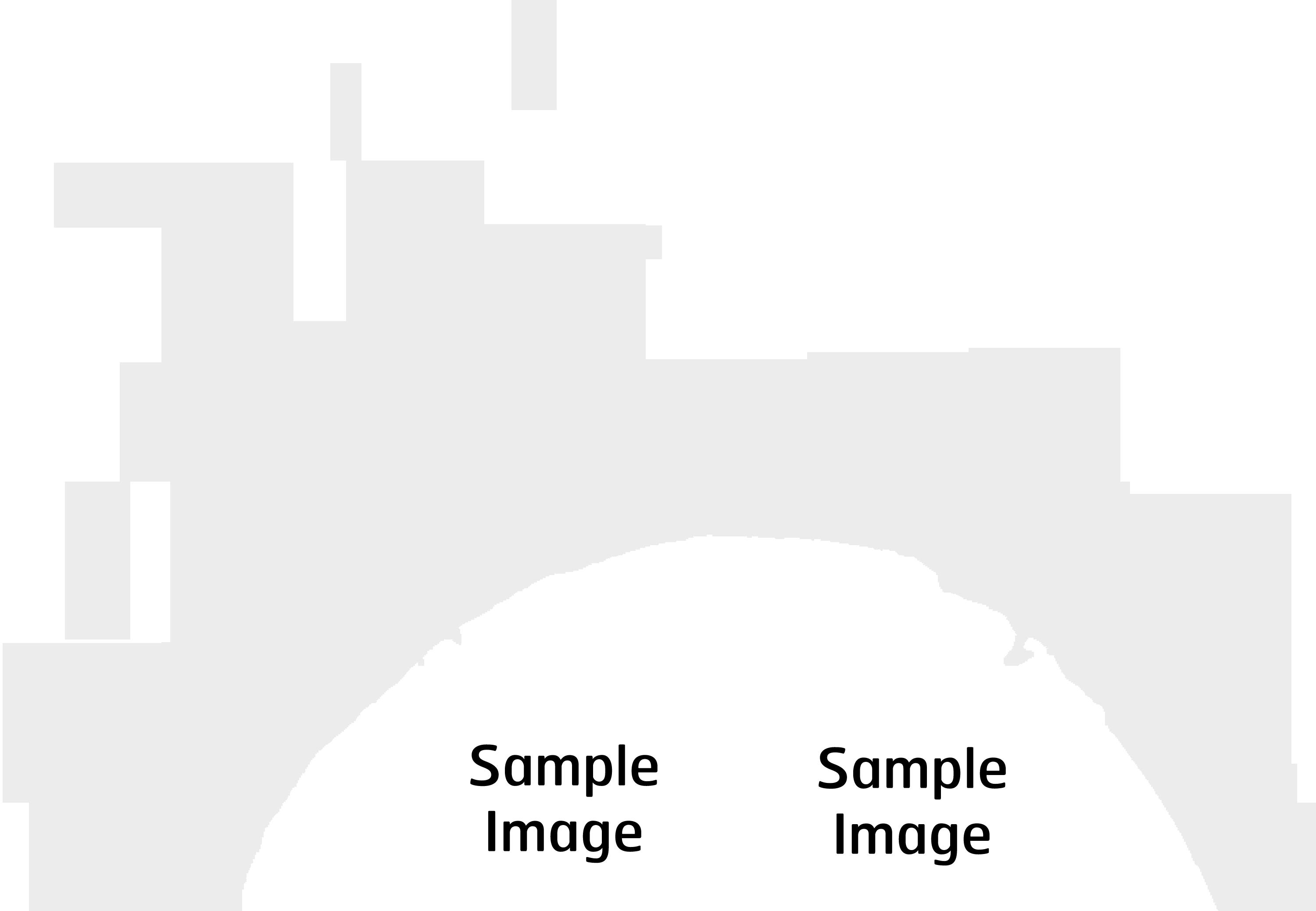RUSH HOUR SAMBA
Rush Hour Samba by Eric Rath © 2025 Tapspace Publications, LLC (ASCAP). All rights reserved.
tapspace.com
Notice of Liability: Any duplication, adaptation, or arrangement of this composition requires the written consent of the copyright owner. No part of this composition may be photocopied or reproduced in any way without permission. Unauthorized uses are an infringement of the U.S. Copyright Act and are punishable by law.
TSPCE25-017
PROGRAM NOTES
Rush Hour Samba features a large keyboard percussion palette, rhythm section, and a number of optional Latin percussion instruments. It captures the vibrant spirit of samba with its engaging rhythms and lively textures and is reminiscent of the music of Airto Moreira, Andy Narell, and the Caribbean Jazz Project. In tribute to the late Dave Samuels, the middle section includes an opportunity for an improvised vibraphone solo.
Rush Hour Samba honors Dr. David Bessinger, longtime percussion professor at Southwestern Oklahoma State University (Weatherford, Oklahoma). Commissioned by Marc Christy in a consortium with other prominent SWOSU percussion alumni, the piece celebrates Dr. Bessinger’s influence on countless students and students of students stretching well beyond their alma mater. Originally titled Legacy Groove, it was premiered as a surprise gift for Dr. Bessinger, performed by his alumni students in April of 2023.
PERFORMANCE NOTES
While there are only two parts for marimba and two for vibraphone, there is freedom to double and triple these parts to get as many performers involved as possible. This is also true in the Latin percussion parts, and an ensemble should feel free to add additional players on triangle, samba whistle, cuica, et cetera, or simply double up on the shaker or conga and bongo parts. The more the merrier! (Use the shaker part as an easy “road map” for any added instruments you want to use.)
The bass guitar part calls for a drop D tuning, lowering the low E string to a D instead. The use of a 5-string bass can also compensate for the extended lower range. The timpani part complements the bass part considerably. However, to highlight the differences between the two sonorities, the timpanist should experiment with a variety of mallets to find something that blends well with the bass while also retaining the characteristic percussiveness of the instrument.
Balancing to a drumset can be one of the hardest things to do in a percussion ensemble setting. It’s a worthy pursuit, though, and involves the drumset player perhaps playing a little softer than they’d prefer while asking the keyboard instruments to play stronger than they might normally. The non-pitched percussion instruments can also muddy things up by overplaying and not fitting their timing with the drumset part. These parts are all about the color of the instrument, not the volume it can produce. (“With great power comes great responsibility.”)
Regarding the drumset part: The performer should, within reason, feel like they do not need to play every note exactly as written—especially the fills! I wrote what I would play (or, more accurately, what I’d like to be able to play), but those are just suggestions. As long as the player retains the spirit of the part and properly supports the other performers, they can stretch out and customize a bit.
The middle section starting at letter H can be repeated to either allow for additional performers to improvise or for a single individual to improvise longer (i.e., repeat letter H to letter I multiple times with a cue to move on). For multiple players, the ensemble can repeat letter H to letter K as many times as necessary. Even the first two measures of letter L can be repeated in case you want to extend the percussion jam to allow for soloists. Or you can just play the piece straight down, go back to the sign, take the coda, and call it good.
Have fun with this! Don’t forget to move your body a little, smile, and engage your audience!
PLAYERS AND INSTRUMENTATION
Rush Hour Samba requires 10-16+ players with the following instrumentation:
1. Chimes
2. Glockenspiel
3. Xylophone
4. Vibraphone 1
5. Vibraphone 2
6. Marimba 1 (4-octave)
7. Marimba 2 (4.5-octave, low F)
8. Piano*
9. 4 Timpani (32", 29", 26", 23")
10. Bass guitar (or bass synth)
11. Drumset
12. Percussion 1* — 2 brake drums (high/low), suspended cymbal
13. Percussion 2* — bongos
14. Percussion 3* — congas
15. Percussion 4* — timbales (w/ small crash cymbal & cowbell), mark tree
16. Percussion 5* — shakers (large & small)
All vibe and marimba parts may be doubled.
*optional parts
SUGGESTED SETUP

NOTATION KEY

Medium Approx. playing time: 4'25"

















